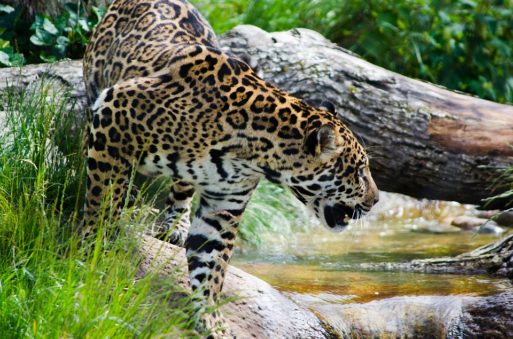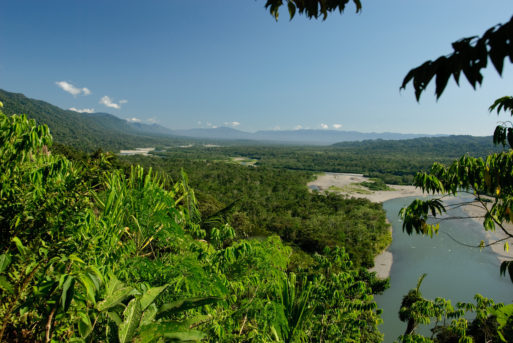
Credit: Stan V. Petersen
People of all cultures and in all regions of the world have fears about death. Some fears stem from concepts of heaven and hell or karmic retribution, while many center on the mystery of the afterlife. For the Matsigenka people of Peru, however, this uncertainty boils down to a very specific question: Will I turn into a jaguar when I die?
Jaguars have long been a prominent fixture in South American folklore, dating back to the Aztec, Olmec and Mayan cultures. The large jungle cats inspire both fear and respect with their beauty, grace and hunting prowess. The Matsigenka often incorporate jaguar-like patterns in their clothes and body decorations, even painting jaguar spots on their children’s faces as a means of protection. Ordinary jaguars are of little concern to them, as most tend to stay far away from villages.
Humans who have turned into jaguars, however, pose a serious threat. These cats, sometimes referred to as “were-jaguars” in Western descriptions, are unusually large and linger near human settlements, snatching up game and occasionally even killing children. For this reason, having a loved one turn into a jaguar is a constant and pressing fear for the Matsigenka.
Spirit Attack or Dangerous Bargain?
An anthropologist named Glenn Shepard began studying the Matsigenka in 1987, living among them to learn their cultural, spiritual, and medicinal practices. He noted that the people who were believed to have turned into jaguars were usually those who died long, painful, or unusual deaths, which the Matsigenka often saw as evidence of spirit attacks. However, becoming a jaguar could also be attributed to taking “kaviniri,” an extremely intense hallucinogenic plant, in one’s youth. “Kaviniri” was believed to enhance one’s hunting skills, but it left the user vulnerable to “maetagantsi,” or “growing fur” — becoming a jaguar.
“Maetagantsi” is believed to start before death, with the afflicted transforming by night to hunt. Once the person dies, however, the transformation is irrevocable and complete. The Matsigenka have a number of methods for preventing this; those who believe they have begun “maetagantsi” can drink honey, which is supposed to quench the jaguar’s thirst for blood. When the person dies, his or her nostrils are covered with resin to smother the jaguar and keep it from taking over. If a village member manages to kill a once-human jaguar, the body is burned to prevent a return.

The Matsigenka live in Manú National Park, a UNESCO World Heritage Site.
An Animist Approach to a Human Struggle
In his research, Shepard noted that the Matsigenka’s perception of death was in many ways the inverse of Western views: Rather than expecting survivors to grieve the dead, the Matsigenka believe that those who die may remain dangerously attached to the living, attempting to pull them away into “kamtsiseku,” or the “Realm of the Dead.”
The idea of physical transformation — a loved one becoming a dangerous, predatory animal — allows the Matsigenka to draw a stark divide between life and death, perhaps as a means of mitigating grief. Prolonged deaths can often mean watching a loved one turn into something we don’t recognize; it may be comforting to know exactly what that something is and what to do with it.
Shepard believed that “maetagantsi” was also a way for the Matsigenka to cope with the complicated emotions that arose from caring for community members with long or problematic illnesses. Such emotions are not unique to any one culture. In the U.S., family caretakers struggle with guilt, resentment, and even relief when their loved one’s suffering ends. Ultimately, perhaps, the question faced by the Matsigenka is not “Will I turn into a jaguar when I die?” but a far more universal one: “Will I be a burden to my loved ones?”

 The Matsigenka and the “Were-Jaguars” of Peru
The Matsigenka and the “Were-Jaguars” of Peru


 How Dare You Die Now!
How Dare You Die Now!
 Debating Medical Aid in Dying
Debating Medical Aid in Dying
 “Help Me, Helen”
“Help Me, Helen”














